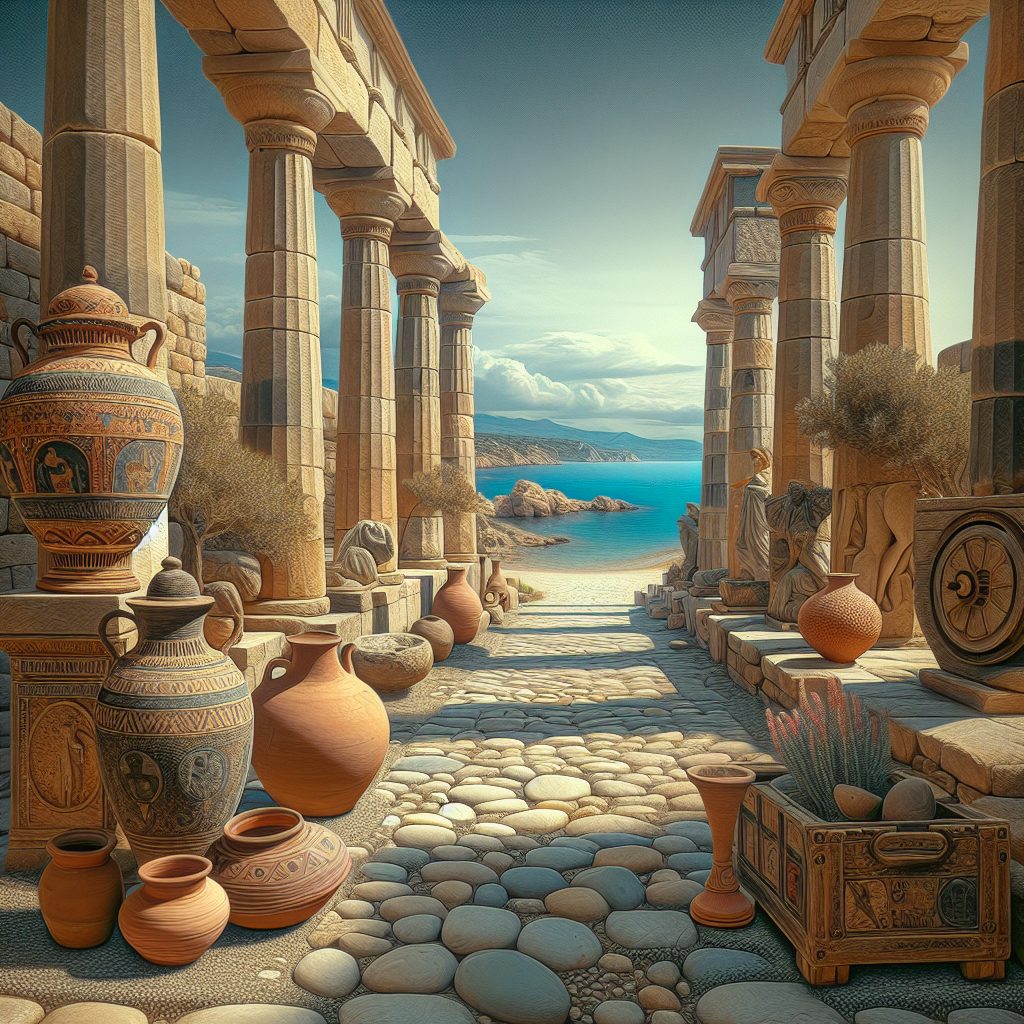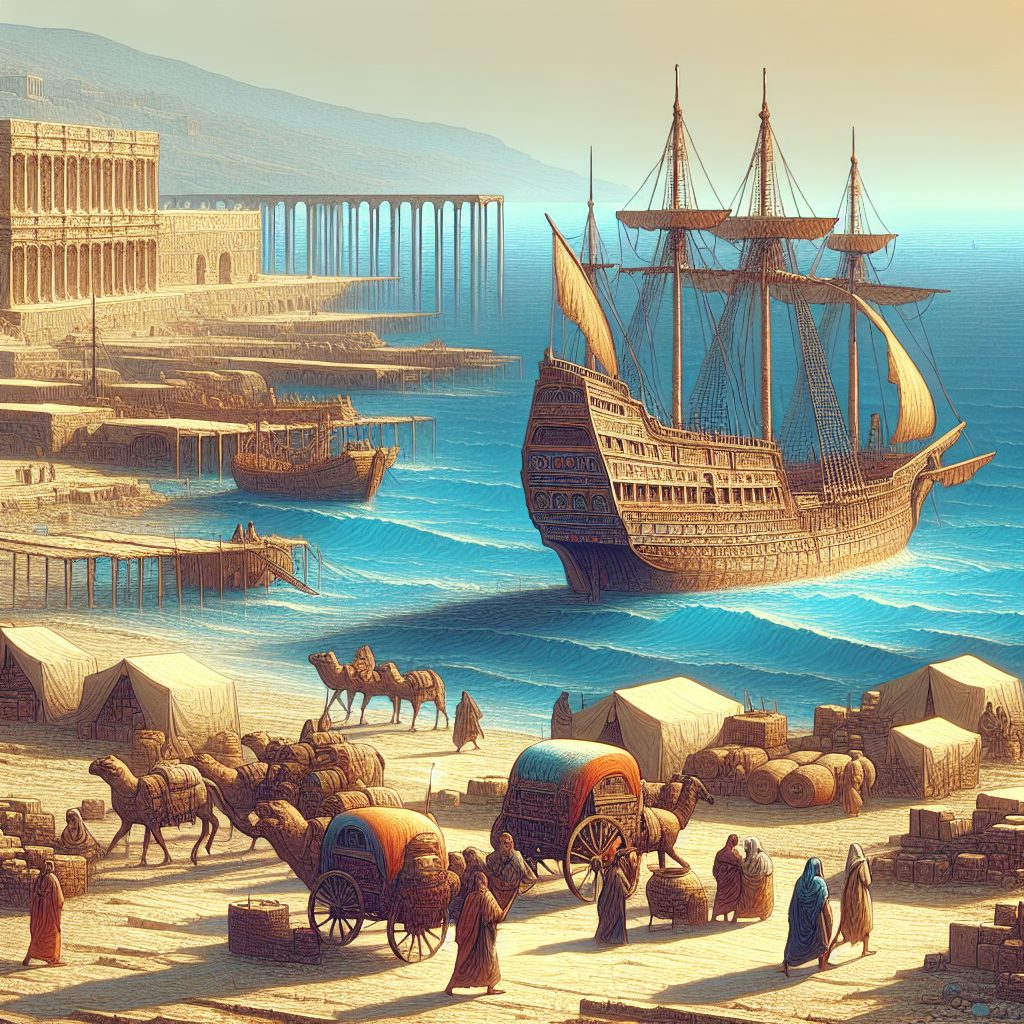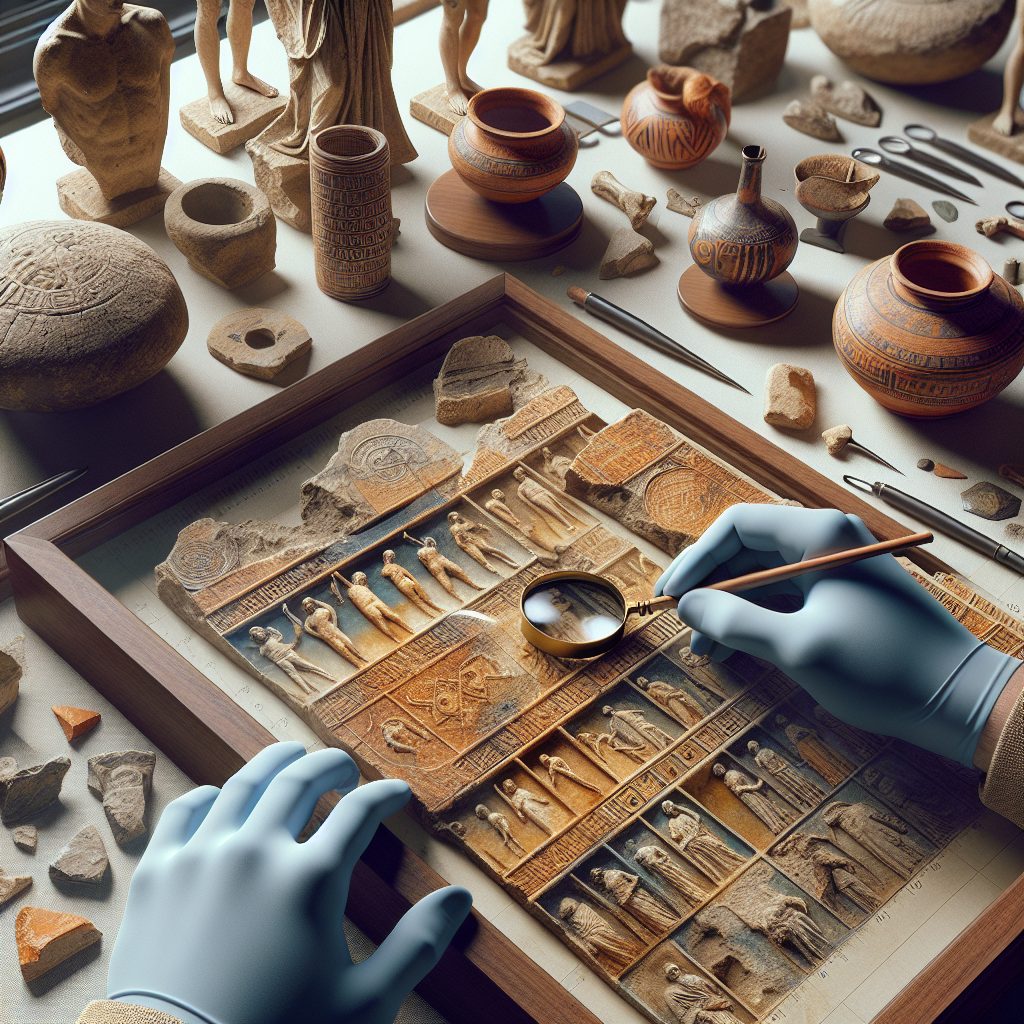Tharros, an ancient Phoenician-Roman city in what is now Sardinia, holds great historical significance. Its name translates to “tower” in Phoenician, reflecting the city’s strategic location overlooking the Mediterranean Sea. Tharros became a vital trading hub, connecting the Western Mediterranean with the Eastern Mediterranean and contributing greatly to the economic and cultural growth of the region. The city’s unique position allowed it to flourish and play a pivotal role in various historical events.
One of the key impacts of Tharros is its remarkable architectural remains, which offer valuable insights into ancient civilizations. The ruins of temples, houses, and fortifications provide a glimpse into the lives of the people who inhabited Tharros centuries ago. Notably, the city’s extensive network of streets, sewers, and cisterns showcases the advanced engineering skills of its inhabitants. Tharros also boasts numerous Phoenician and Roman artifacts, such as pottery, jewelry, and coins, shedding light on the trade and cultural connections that once thrived there.
In the upcoming sections, we will delve deeper into Tharros’ historical significance and explore its impact in various aspects. Firstly, we will discuss the city’s role as a vibrant trading center, examining the goods that were exchanged and the routes that were established. Secondly, we will explore Tharros’ cultural and religious significance, analyzing the temples and rituals that were practiced by its inhabitants. Lastly, we will elaborate on the archaeological importance of Tharros, highlighting the excavations and discoveries that have shaped our understanding of the ancient world. Join us as we journey through the captivating history of Tharros, unearthing its hidden treasures and unraveling the mysteries of this enchanting city.
Key Takeaways
1. Tharros, a coastal city on the island of Sardinia, holds significant historical importance as it was a significant Phoenician and Roman settlement, dating back to the 8th century BC.
2. The archaeological remains found in Tharros provide valuable insights into the ancient civilizations that inhabited the city, including its Phoenician origins and later Roman influence.
3. Tharros’ location on the coast made it an important trading hub in the Mediterranean, with evidence of trade connections reaching as far as the Eastern Mediterranean and North Africa.
4. The city’s strategic position also made it a key defensive outpost, as reflected in the impressive fortifications and defensive structures found throughout Tharros.
5. The site continues to be excavated, uncovering new artifacts and expanding our understanding of Tharros’ rich history, making it an important destination for historians, archaeologists, and tourists seeking to explore the ancient world.
What is the Historical Significance of Tharros?
The Ancient City of Tharros
Located on the western coast of Sardinia, Italy, Tharros is an ancient city that holds great historical significance. Established by the Phoenicians in the 8th century BC, this strategic city thrived for several centuries before facing attacks and eventual decline. Today, Tharros stands as a significant archaeological site, attracting visitors interested in uncovering its fascinating history.
Phoenician Influence on Tharros
The founding of Tharros by the Phoenicians marks an important period in its history. As one of the major Phoenician colonies in the Mediterranean, the city became a significant hub for trade and a melting pot of different cultures. The Phoenician influence is still evident in the ruins and artifacts discovered in Tharros.
Roman Rule and Prosperity
During the Roman era, Tharros reached its peak of prosperity. The Romans recognized the strategic location of the city and used it as a crucial port for their maritime trade routes. Tharros became a flourishing center for trade, commerce, and cultural exchange under Roman rule, leaving behind remarkable architectural remains and evidence of their advanced infrastructure.
Religious Significance
Tharros was not only a hub for trade and governance but also held religious significance. Ancient deities were worshipped in Tharros, and important religious ceremonies and rituals were conducted within its temples and sanctuaries. The discovery of various religious artifacts illustrates the important role of spirituality in the lives of its inhabitants.
Trade and Cultural Exchange
Tharros served as a vital trading port, connecting civilizations from different corners of the Mediterranean. This brought about a rich cultural exchange, resulting in the blending of traditions, languages, and architectural styles. The artifacts unearthed in Tharros provide valuable insights into the diverse influences on the city’s development over time.
Decline and Legacy
Despite its flourishing history, Tharros faced numerous challenges and ultimately declined. Attacks from Vandals and Saracens in the 5th and 9th centuries respectively, led to the city’s abandonment and subsequent erosion. However, Tharros remains an invaluable archaeological site that allows us to piece together the puzzles of ancient civilizations and understand the complexities of their existence.
Exploring Tharros: Tips for Visitors
- Plan your visit: Before exploring Tharros, check the opening hours and availability of guided tours to make the most of your time there.
- Take a guided tour: Consider joining a guided tour to gain deeper insights into the historical significance and stories behind the ruins of Tharros.
- Bring a guidebook: A guidebook can provide additional information and help you navigate the extensive ruins and archaeological sites within Tharros.
- Wear comfortable shoes: Tharros is spread over a large area, so ensure you wear comfortable footwear to fully explore the site.
- Respect the site: Remember that Tharros is a valuable historical site. Follow the rules and regulations to help preserve its integrity for future generations.
Frequently Asked Questions
What is the historical significance of Tharros?
Tharros holds immense historical significance as an ancient Phoenician-Roman city located in Sardinia, Italy. It was a flourishing maritime trading hub and important center of power throughout several centuries.
What are the main archaeological findings in Tharros?
Archaeologists have discovered various remarkable artifacts in Tharros, including Roman-era mosaics, thermal baths, ancient ruins of dwellings, a necropolis, and an early Christian church.
How old is Tharros?
Tharros dates back over 2,500 years and was initially founded by the Phoenicians around the 8th century BC. It later came under Roman rule, experiencing further development and growth.
What role did Tharros play in the Phoenician civilization?
Tharros served as a vital port and acted as a bridge for trade between the Phoenicians and other civilizations in the Mediterranean region. It also played a significant role in spreading Phoenician culture.
Why is Tharros considered an important Roman city?
Tharros became a prominent Roman city due to its strategic coastal location, which made it an ideal port for trade and military purposes. The Romans further developed Tharros by constructing various infrastructure and architectural marvels.
What happened to Tharros after the fall of the Roman Empire?
Following the decline of the Roman Empire, Tharros gradually lost its importance and fell into abandonment. The remaining structures were gradually dismantled, looted, or repurposed by subsequent civilizations.
Can tourists visit Tharros today?
Yes, Tharros is open to tourists and visitors. The site offers a unique opportunity to explore ancient ruins, experience the rich history of the region, and appreciate the beauty of the surrounding coastal landscape.
Are there any guided tours available in Tharros?
Absolutely! Visitors can join guided tours in Tharros to have a more immersive and educational experience. Expert guides provide insights into the historical and archaeological aspects of the site.
What other attractions are nearby Tharros?
Close to Tharros, visitors can explore other intriguing sites such as the Phoenician ruins of Cornus and the Archaeological Museum of Cabras, which houses artifacts discovered in Tharros and its surroundings.
Is Tharros a UNESCO World Heritage Site?
Unfortunately, Tharros is not currently listed as a UNESCO World Heritage Site. However, its historical significance and archaeological value continue to be recognized by experts and enthusiasts alike.
Final Thoughts
Tharros exemplifies the captivating merge of Phoenician and Roman cultures, offering a glimpse into the ancient world’s thriving trading network and architectural brilliance. Exploring the ruins of Tharros is like taking a step back in time, immersing oneself in the history and grandeur of a bygone era.
While Tharros may have lost its former glory, it serves as a testament to the achievements and advancements of ancient civilizations. Preserving and appreciating such historical sites ensures that their legacy endures, leaving us in awe of the past and inspiring future generations to cherish and learn from our diverse history.






